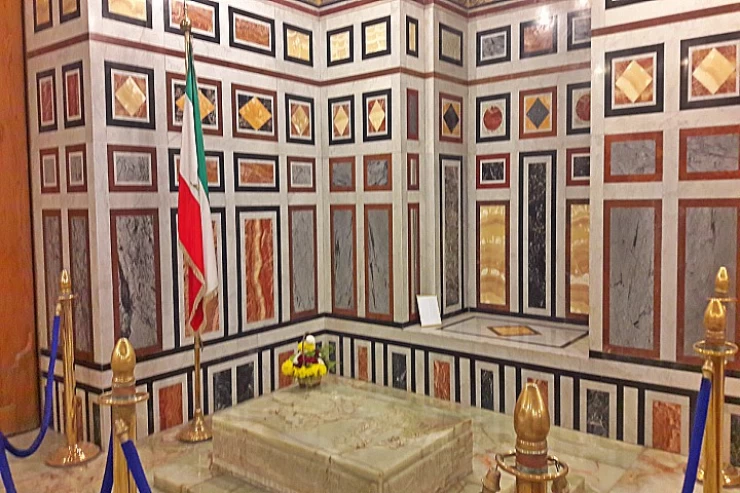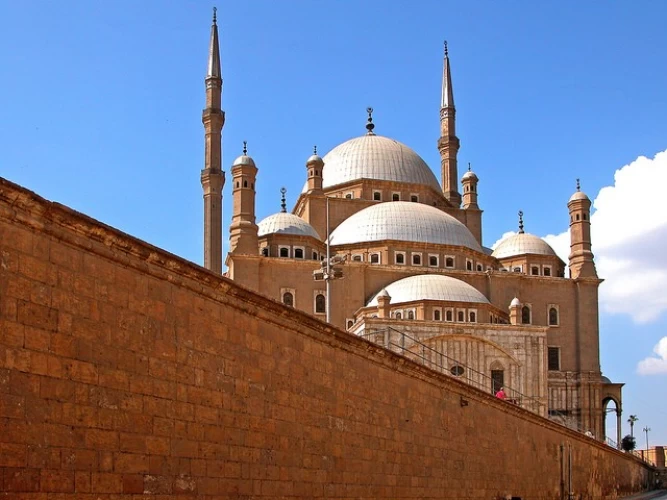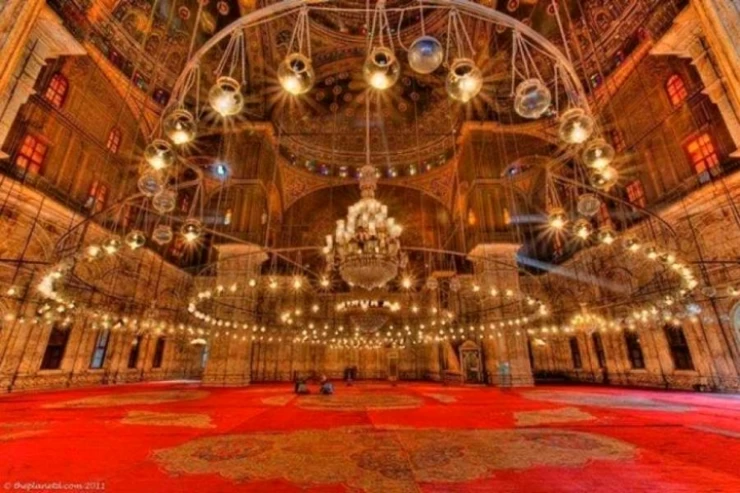
Islamic Cairo
Islamic Cairo
Islamic Cairo is the current capital of Egypt, also called the Cairo of Al-Moez after Al-Moez Din Allah Al-Fatimi. There have been several developments in recent centuries, and the word Islamic Cairo does not mean the presence of Muslims only; this word means that these areas include a lot of Islamic heritage and antiquities, and these are characterized by old architecture in the Islamic style.
For example, there are mosques, tombs, and citadels dating back to the Middle Ages, and Cairo is considered one of the oldest Islamic cities in the world, but it is different from other cities such as Giza and Luxor, which include Pharaonic heritage such as temples, pyramids, and others.
History of Cairo
The early eras of Islam
As we know, Islam entered Egypt during the reign of Amr ibn al-As, but in this period, Alexandria was the capital of Egypt, as it was the first defense site of Egypt since the Ptolemaic eras, but the Arabs decided to change the capital to another region, and they chose an area near the Babylonian fortress and called it Al-Fustat.
They chose that area for several reasons; for example, it is far from the attacks that come from the Mediterranean Sea and the privileged location of the city of Fustat on the coast of the Nile River, which was the center of the state, and to this day the Nile River is considered the backbone of the Egyptians. Finally, after Amr bin al-Aas entered, he ordered the construction of a mosque that is the oldest in Egypt and Africa; this mosque has his name and still exists in the Old Egypt area near the Hanging Church.
If you come to Egypt, you will always find this tradition of having mosques near churches, which is a sign of peace in Egypt among all the Egyptians.
Umayyad and Abbasid eras
Egypt was controlled by the Umayyad state, whose capital was Damascus, which was founded by Muawiya ibn Abu Sufyan, who ruled for a long time.
During his rule, a struggle broke out between him and Amr ibn Al-Aas, but after that, his son took the throne and built many places, like the Diwan Al-Khatam. But after the death of Yazid ibn Muawiya ibn Sufyan, the state retreated and weakened, and a struggle for the throne took place between Abdullah Zubair and Abdul Malik ibn Marwan, and the second won and stability returned to the state again.
They entered Egypt in this era and remained in it until the last Umayyad king, Marwan II, who was defeated by the Abbasids and ruled Egypt, so the city of Fustat was changed to Al-Askar as the capital of Egypt at that time until a Turkish commander named Ahmed bin Tulun came to conquer Egypt and take absolute rule over Egypt, and Egypt became an independent country again after hundreds of years since the Roman civilization.
However, Ahmed ibn Tulun took control of Egypt on his own and made his capital Al-Qata'a near the city of Al-Askar. This ruler was interested in architecture, and he built hospitals, schools, and mosques like the Ahmed ibn Tulun Mosque, which still exists to the present time.
Fatimid era
In the Fatimid era, Egypt was an Abbasid state, but Tunisia was at the time ruled by Al-Moez Din Allah, and he ordered the commander Gohar Al-Suqali to open it, and Egypt then became a Fatimid state. Al-Moez established a new city to be the center of government in Egypt, which is the city of Cairo, so they called it Cairo Al-Moez after the ruler who built it, as Al-Moez built two palaces and called the space between them the name between the two palaces, which includes Al-Azhar Mosque, to which all Muslims from all over the world come.
To learn everything related to the Islamic religion, it is an important Islamic cultural center in Egypt, Africa, and also the entire Middle East, and the city of Cairo in the Fatimid era was not entered by anyone except state officials and emirs, unlike today, anyone can enter it. Al-Moez also built a street in his name, as he built two gates on the north and south sides, but the most famous of them is Bab Zuwayla, which is one of the oldest gates in the Islamic eras.
The Fatimid era became a time of prosperity until the Crusaders came and occupied Jerusalem. They became a great danger to Egypt until Prince Imad al-Din Zinki entered into many conflicts with them, then they occupied Egypt, and the Crusaders entered Cairo, and many bad things happened, like the fire of the city of Fustat, which was a vital point in which history changed until Salah al-Din Ayyubi came and drove them out of Egypt, and Egypt returned to dominance again and started a new chapter in Egypt in the Ayyubid era.
The Ayyubid, Mamluk and Ottoman eras
Egypt, in the Ayyubid era, was one of the strongest and most fortified countries on the Mediterranean Sea coast, where Saladin built citadels to be an important defense position for Egypt and the Egyptians against the Crusader danger.
The most important of these constructions for Salah al-Din is the citadel on Mount Muqattam, and he continued to fight the Crusaders and protect Cairo until he died without realizing his most important dream, which was the liberation of Jerusalem.
The Ayyubids ended, and then a new era came the Mamluk era, and they followed the Sunnis, unlike the Ayyubids, who followed the Shiites. So many things were changed in their era, such as the Azhar Mosque, which they made into the largest center for teaching the Quran in the world.
The Mamluk era lasted for a long time until the famous battle in Ain Jalut against the Mongols and the end of the crusader threat permanently. King Al-Nasser came and ruled, and Cairo became, at that time, a city and a large center. In the 14th century, a disease called the plague came and killed everyone until it ended after a long time. Despite that, Cairo remained a large city in which they built many places, the most important of which is now Khan Al-Khalili, which was one of the most important Egyptian bazaars and even today is an important tourist place to which tourists visit a lot during the year.
In the Ottoman era, Cairo remained an important center for the Ottoman Caliphate and was also an important center for going on pilgrimage, but they did not care much about architecture, as it was always following in the footsteps of the Mamluks in their buildings, but they built few buildings until the golden period of Egypt came, which is the rule of Muhammad Ali Pasha.
In the era of Muhammad Ali and the Khedives
Before the rule of Muhammad Ali, the French expedition entered Egypt and stayed for several years, but an Ottoman officer came from Albania and was able to rule Cairo and was able to make Egypt an independent country despite all the wars and invasions, and Muhammad Ali began building many buildings, as he demolished many buildings of the Mamluks to build his mosque, which is called the Muhammad Ali Mosque.
After him came the Khedives, and they started building many of the huge construction projects that exist until now. They were interested in foreign trade; for example, Khedive Ismail started the Suez Canal project and started building a new city that mimics European cities, and over time, the place of the caliphate was moved from the castle, which lost its importance at the time, to Abdeen Palace, this period continued to go through many historical events until it reached the Cairo that exists today.
The most important tourist places in Islamic Cairo
This city was also home to the construction of many mosques, among them Ahmed ibn Tulun Mosque, Amr ibn al-Aas Mosque, Al-Azhar Mosque, and Muhammad Ali Mosque.
Various tombs were also constructed, among them the tomb attached to the Hussein Mosque, which is claimed to contain the head of Hussein ibn Ali ibn Abi Talib, one of the Rashid caliphs, the grave of Muhammad ibn Idris al-Shafi'i, and the mosque of Sayyida Zaynab.
They built gates like Bab Zuwayla and Bab al-Nasr that stood north and south of Cairo, Bab al-Barqiya being another from the Ayyubid era, the citadel of Salah al-Din al-Ayyubi, and countless bazaars like Khan al-Khalili-the most famous among them all.
Islamic Cairo is located in the heart of the modern metropolis of Cairo, a place of fascination with its past, culture and beliefs that have been practiced over the years. Also known as Old Cairo or Medieval Cairo, the area has been recognized and declared by UNESCO as an architectural heritage under its protection. It is home to impressive mosques, madrasas and other buildings dating back to the golden age of the Islamic Empire. For tourists, Islamic Cairo is a unique place that transports them to a time when the cries of Musasin could be heard around every corner and people's noses smelled warm spices.
go back to the seventh century when the Arab conquerors first introduced Islam into Egypt. Through the centuries, Cairo rose and became the center of the Islamic Empire under various dynasties: the Fatimids, Ayyubids, Mamluks, as well as the Ottomans. Each of these contributed and left traces of the architectural magnificence and cultural depth of the present surroundings.
Once it bloomed into its glorious days, Islamic Cairo was a thriving metropolis of commerce, schools, and temples. In the 10th century, the Fatimids moved to Egypt and made Cairo their political capital, erecting such memorable edifices as al-Azhar Mosque and the original city enclosure. Later, the Mamluks built their marvelous mosques, tombs, and madrassah structures, which embellished the city further. Even today, Islamic Cairo is still considered to be one of the least altered urban areas containing medieval Islamic architecture throughout the entire world.
When it comes to the variety of places to see in Islamic Cairo, the visitors will surely be loaded with so many sights. Here is a list of some of the landmarks that one should not miss:
1. Citadel of Salah El Din Historical Relevance: Built in the 12th century under the orders of the great Salah El Din (Tamerlane), the Citadel was constructed to protect the city of Cairo from the Crusaders’ threats.Main Characteristics of Construction: The citadel illustrates the example of military architecture of its typical medieval period, characterized by high walls and lookout points. Inside its grounds, tourists can come across the impressive Mosque of Muhammad Ali with its tilted spires and lavish decoration. Overlooking Opportunities: The Citadel is a beautiful and scenic old fortress that has an expansive view over Cairo, enabling you to see even the pyramids clearly at very far distances in good weather, which makes it ideal for taking pictures.
It was Founded in 970 AD, the Al Azhar Mosque is among the oldest universities in the world and a representation of education in Islam.
Art: The mosque is preserved as a fine architectural work of art typical of the Fatimid era. Its complex has exquisitely carved geometric shapes, stucco designs, and a beautiful marble floor. Their artworks in the form of buildings were, however, embellished by other empires, creating a mix of architectural styles under the umbrella of Islamic art.
Spirit: It’s still a religious hub and a cultural center, bringing in scholars, tourists, and other visitors from every corner of the earth. Its atmosphere is comfortable, which allows people a break from the noisy city.
Vibrant Market: Founded in the 14th century, Khan El Khalili is one of Cairo’s most famous souks (markets). A labyrinth of narrow alleys brimming with shops, it’s the perfect place to discover traditional handicrafts, jewelry, spices, and souvenirs.
Historic Tea Houses: While wandering through the bazaar, take a break at one of the historic tea houses, such as El Fishawi’s, which has been serving tea and coffee to patrons for over 200 years. This is a prime spot for people-watching and soaking in the local culture.
Artisan Workshops: Many stalls offer a peek into Cairo’s artisanal heritage, with workshops where craftsmen create intricate gold jewelry, hand-blown glassware, and colorful textiles.
4. The mosque of Sultan Hassan
The Magnificence of Construction: This mosque completed in the 14th century is an epitome of Mamluk designs. Its walls are thick and vertical, with large arches creeping along with a central courtyard enclosing an ablution area.
Center for Educational Purpose: This construction was intended to be a mosque at first and a madrassa (school) attached to it. The purpose was to train pupils in the four Sunni legal schools.
Awesome Features: The stunning mosque has marble inlay, detailed wood carving, and an imposing mihrab, which is a collection of the best works done during the Mamluk’s reign inside.
Cultural Engagements in Islamic CairoIslamic Cairo is not limited to the visit of some ancient archives and churches; it is a cultural experience. So here are some of the activities that could be part of your visit:
1. Attending a Sufi music performance at Ar-Tanura Egyptian Heritage Dance TroupeSpiritual Music: Not only is the venue located at Wekalet El Ghouri an ancient building that serves as a cultural hub, but the performance combines Sufi music and whirling dervishes that are artists performing an age-old dance of spirituality and unison with God.A Vivid Picture: All the spirituality that one associates with Islamic Cairo has easily been stripped away in the loud, festooning music, bright, glittering costumes, and the dervishes spinning around in an entrancing manner.
2. Studying Genre and Context of Islamic Art at the Museum of Islamic Art . An amazing exhibit: The Islamic Arts Museum Malaysia harbors the most extensive collection of Islamic arts ever assembled, consisting of textiles, ceramics, woodworks, and pages and documents from across the Islam dome. Explore: Objects from different Islamic empires and their cultures and achievements in arts within the Islamic world can be found.


















